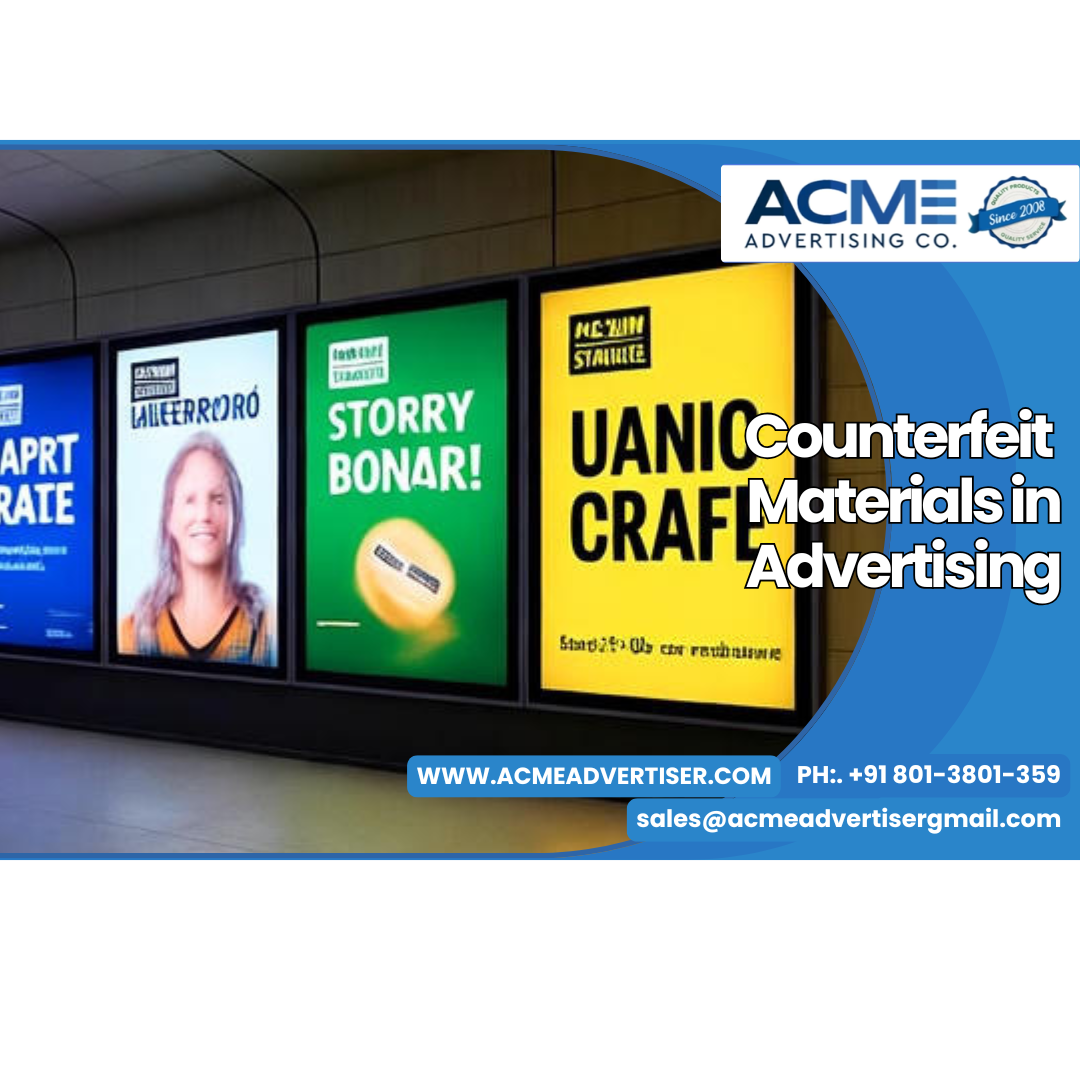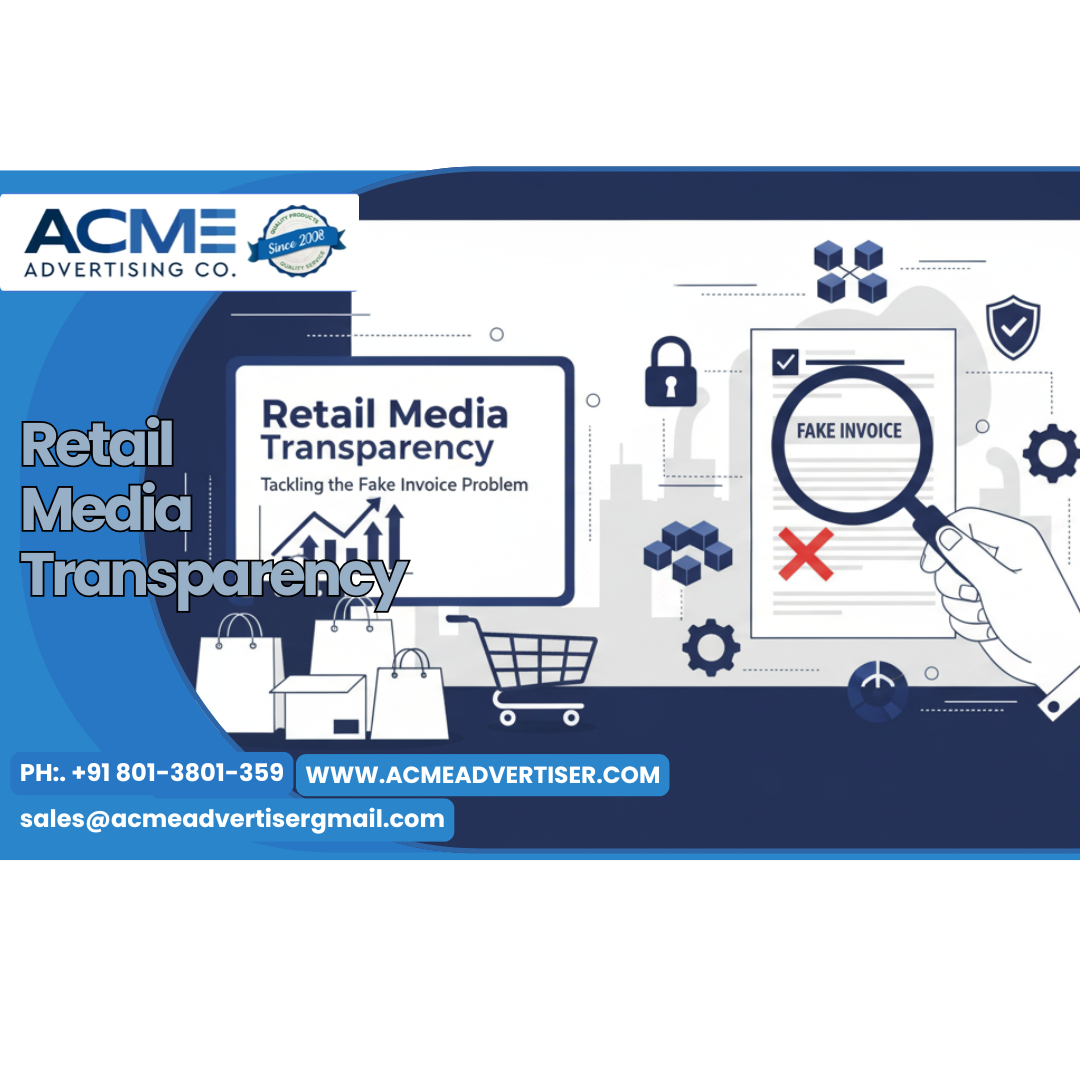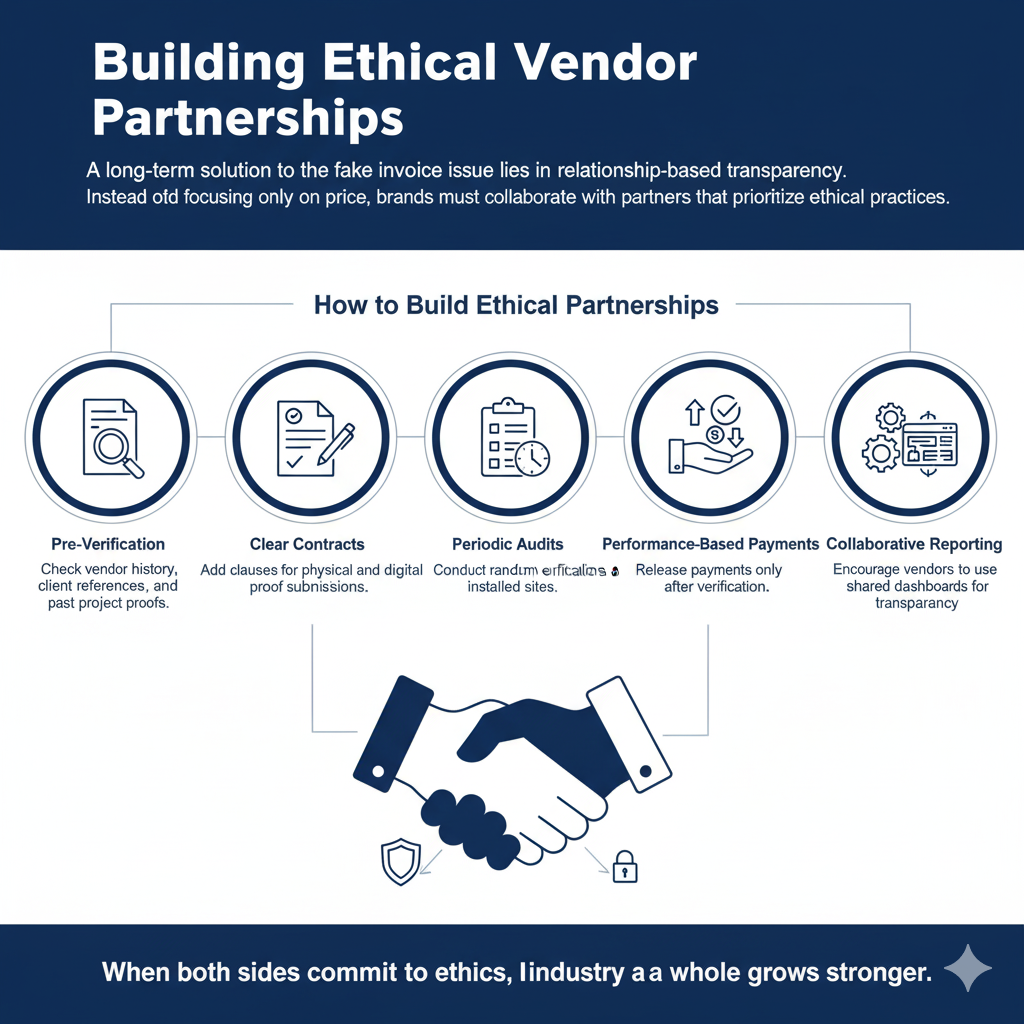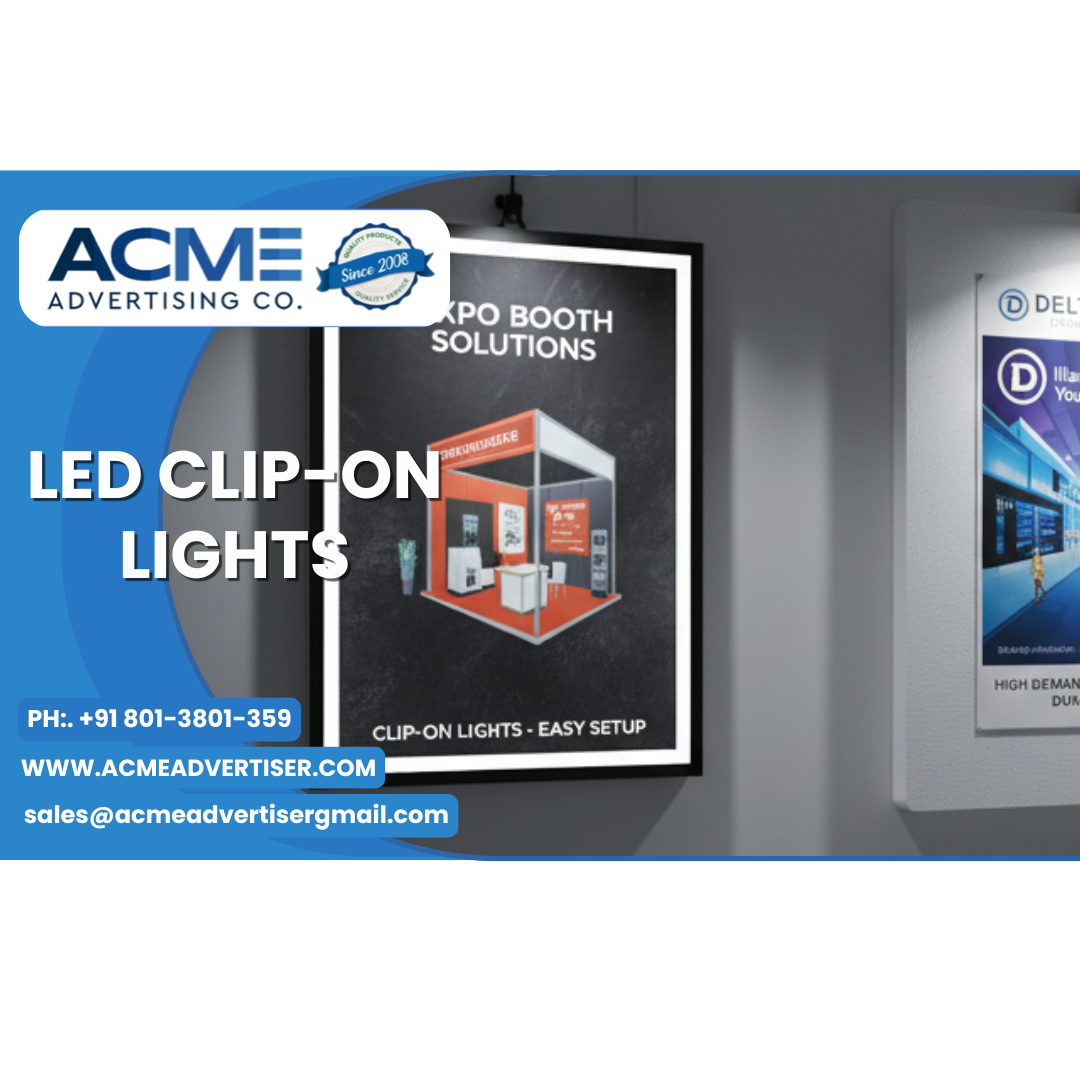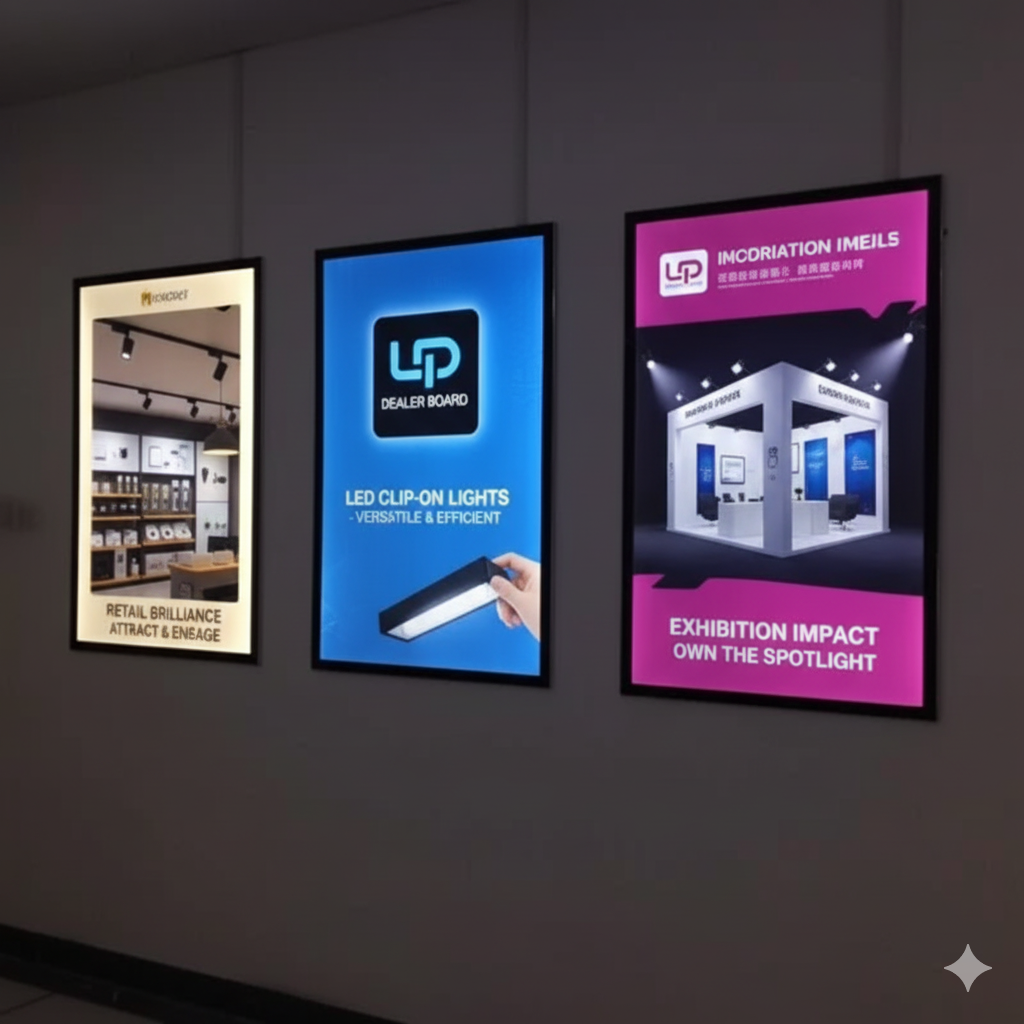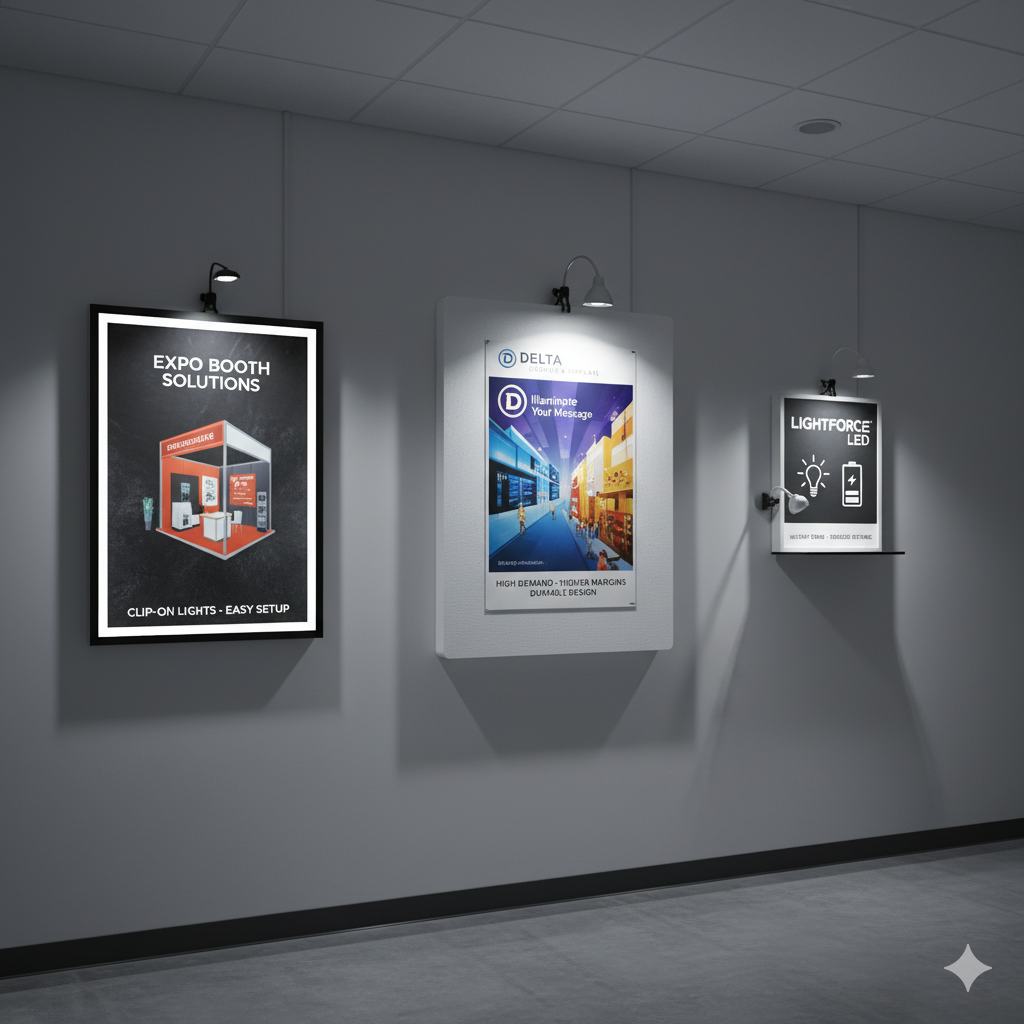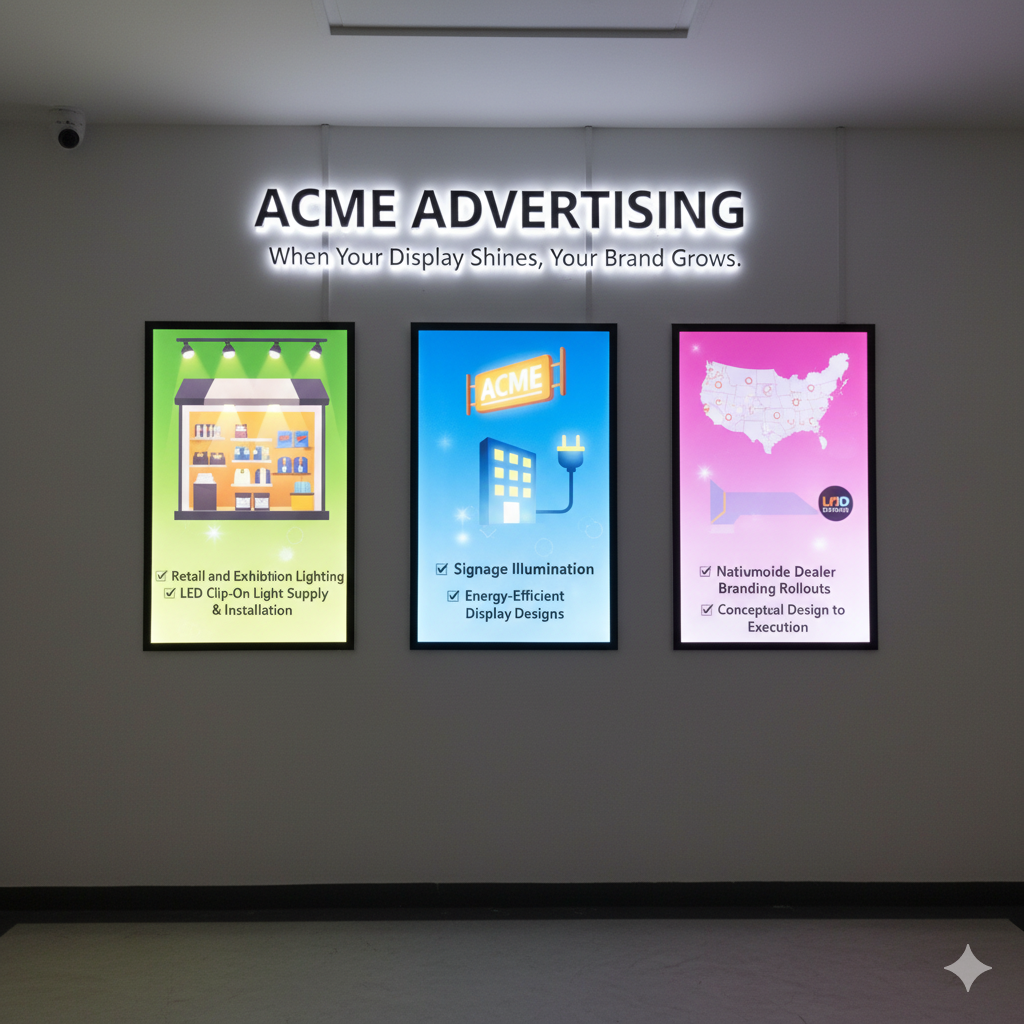The Hidden Threat of Low-Quality Boards and LED Panels
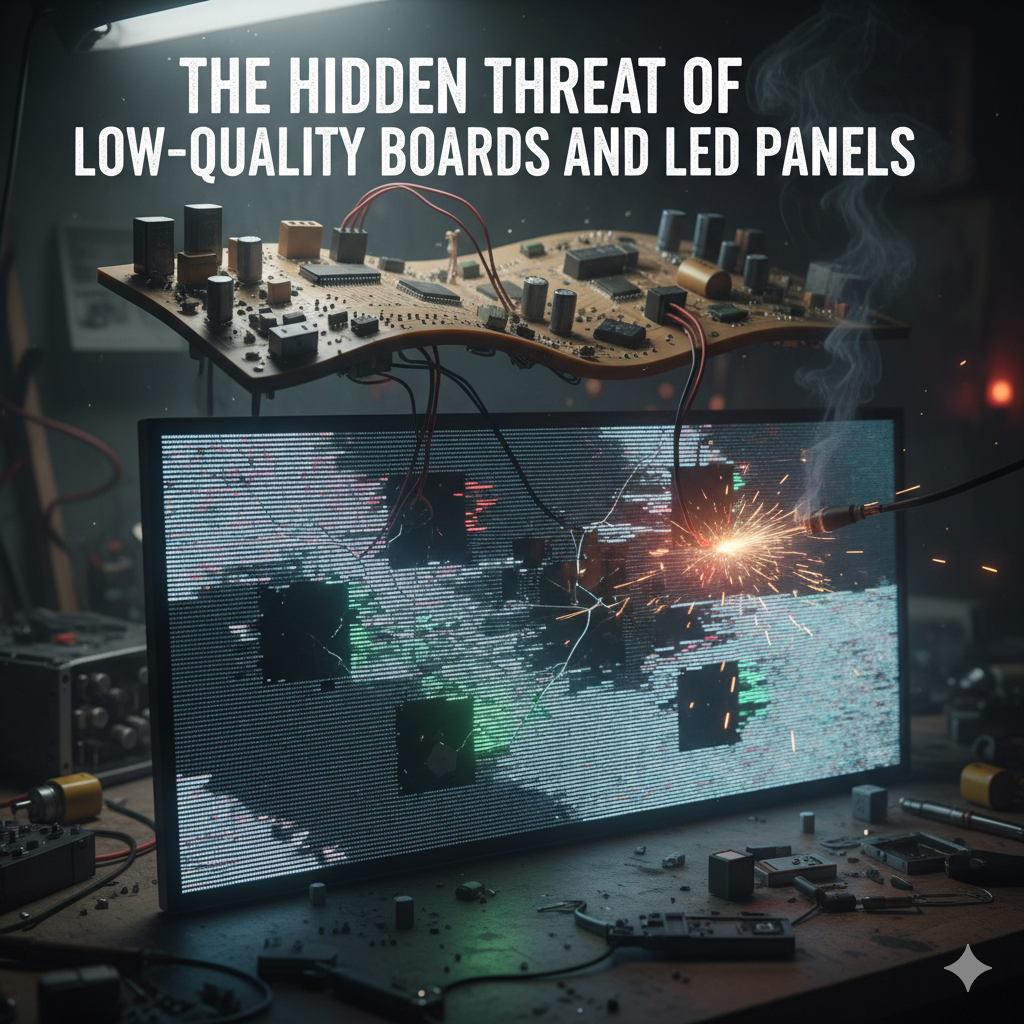
- Introduction: The Rise of Counterfeit Materials in Advertising
- Why This Issue Matters for Brands and Agencies
- How Counterfeit Advertising Materials Enter the Market
- The Hidden Costs of Low-Quality Boards and LEDs
- Real-World Scenarios: What Goes Wrong When Quality Is Compromised
- The Importance of Material Authenticity in Brand Visibility
- How to Identify Fake or Inferior Advertising Materials
- The Role of Ethical Agencies in Quality Assurance
- The Benefits of Using Certified Materials and Verified Vendors
- How Acme Advertising Co. Ensures Quality and Trust
- Industry Insights: Shifting Toward Verified Advertising Standards
- The Future: Transparency and Sustainability in Advertising Production
- Conclusion: Building a Future Where Every Billboard Reflects Integrity
Low-quality boards and led panels: The Rise of Counterfeit Materials in Advertising
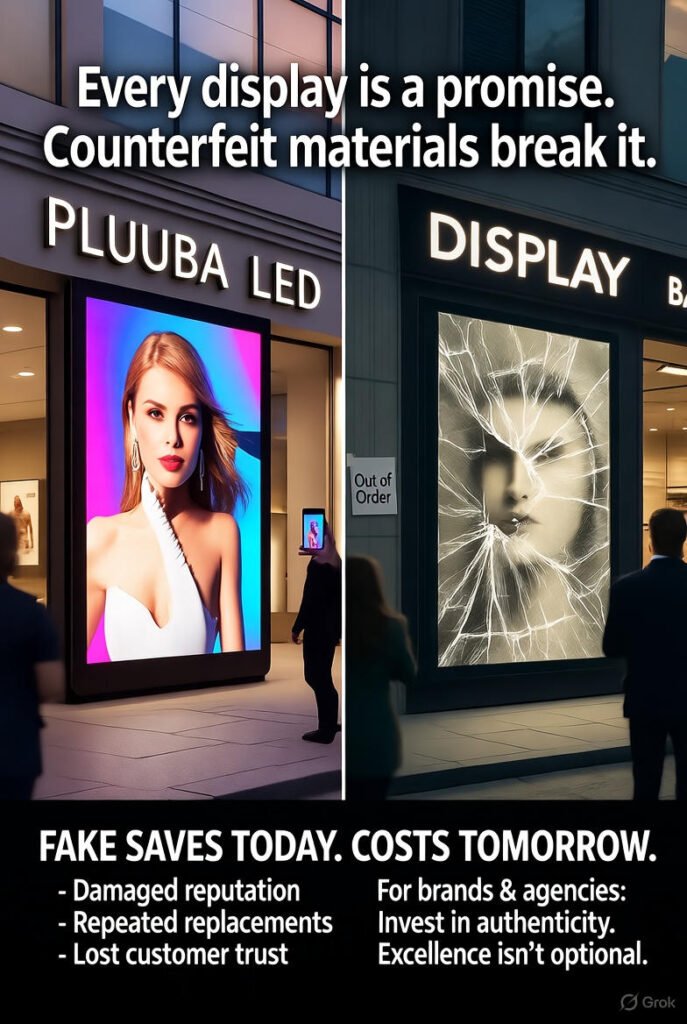
In today’s fast-paced advertising world, where visuals decide a brand’s first impression, quality materials are everything. From roadside billboards to mall LEDs, from mobile vans to metro panels — every surface a brand occupies speaks about its professionalism.
However, the growing market demand for outdoor and retail branding has created a parallel issue — the rise of counterfeit and low-quality materials.
These are boards, LEDs, and signage materials that look genuine at first glance but fail in performance, durability, and visibility. Vendors trying to save costs or increase margins often deliver substandard products while charging brands for premium quality.
The result? Faded hoardings, flickering LEDs, and damaged brand credibility.
Why This Issue Matters for Brands and Agencies
For advertisers, every display is a promise — a visual commitment to the audience that the brand stands for excellence. But when that promise is delivered using counterfeit materials, the entire brand experience collapses.
This problem goes beyond just visual quality — it affects:
- Brand image: Poor displays reflect negatively on the company’s reputation.
- Financial investment: Low-quality materials deteriorate faster, leading to repeated replacements and higher maintenance costs.
- Customer perception: When ads look dull, broken, or unevenly lit, the audience assumes the brand doesn’t value its presentation.
In short, fake or low-grade materials cost more than they save.
How Counterfeit Advertising Materials Enter the Market
Counterfeit or inferior materials make their way into projects through a few common practices:
a. Vendor Substitution
A vendor promises branded LED panels or high-grade flex but installs cheaper, non-certified alternatives.
b. Material Mixing
Half the inventory may be genuine, while the rest is replaced with low-cost substitutes to reduce expenses unnoticed.
c. Mislabeling
Some materials come with fake brand labels, making it hard for clients to distinguish between original and counterfeit stock.
d. Lack of Verification
In many cases, agencies or clients skip quality inspection, allowing vendors to deliver unchecked materials.
This silent infiltration creates a cycle where brands lose money and impact — while counterfeiters profit.
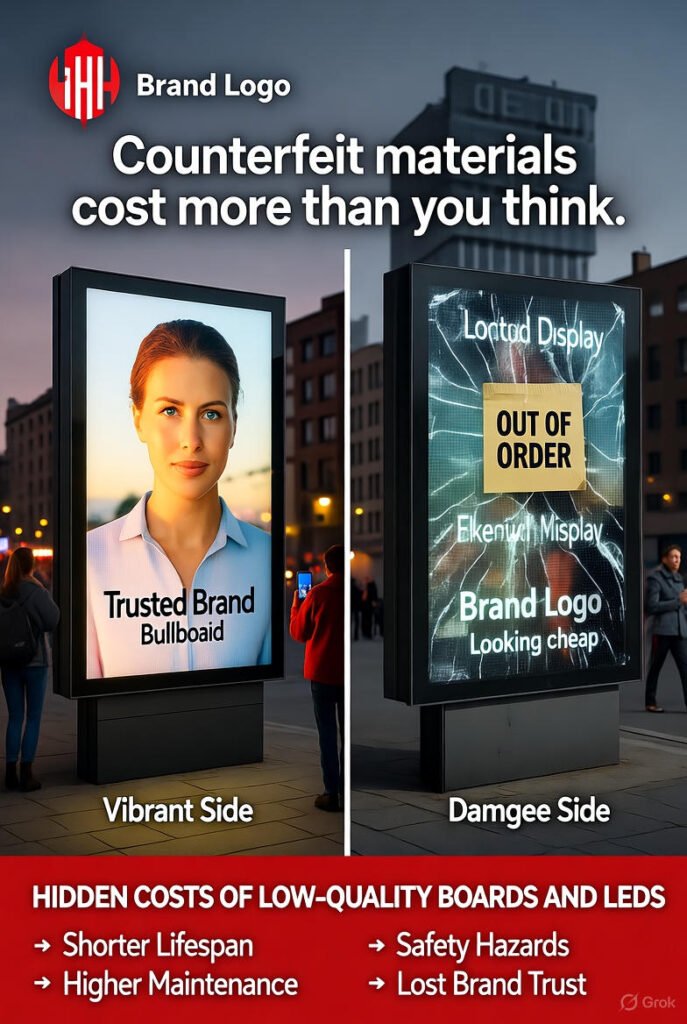
The Hidden Costs of Low-Quality Boards and LEDs
Counterfeit materials don’t just harm visuals — they lead to hidden long-term costs.
a. Shorter Lifespan
Fake or low-quality LEDs burn out within months, while genuine panels last years.
Cheap flex materials tear easily or fade quickly under sunlight.
b. Higher Maintenance
Frequent repairs, replacements, and repainting eat into marketing budgets.
c. Energy Inefficiency
Inferior LED panels consume more power for less brightness, increasing operational costs.
d. Safety Hazards
Poorly manufactured materials pose electrical and fire risks, especially in high-traffic areas.
e. Lost Brand Trust
A single poorly executed campaign can make audiences question the authenticity of the brand itself.
When counterfeit materials become part of your media plan, your ROI suffers silently.
Real-World Scenarios: What Goes Wrong When Quality Is Compromised
Let’s visualize this through examples:
- A retail brand launches a high-budget festive campaign with glowing LED hoardings — but within two weeks, half the boards stop working. The reason? Low-cost, uncertified LED strips.
- A mobile van branding campaign uses cheap vinyl wraps. After a few days in the sun, the prints fade, and edges peel off — damaging the brand’s professional look.
- A luxury automobile billboard starts to wrinkle and tear after rain, despite being billed as “premium flex.”
Each of these incidents doesn’t just cause financial loss — it directly affects brand perception in the eyes of potential customers.
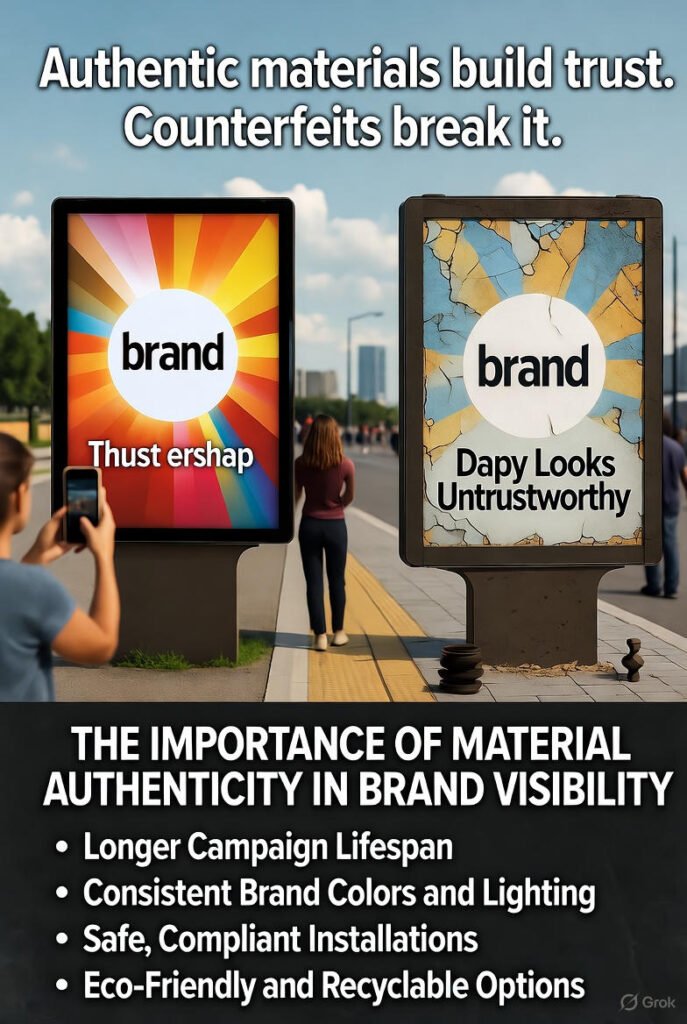
The Importance of Material Authenticity in Brand Visibility
Quality materials form the backbone of outdoor brand storytelling. When displays shine bright, stay intact, and endure weather conditions, they not only attract attention but also build subconscious trust.
Authentic materials ensure:
- Longer campaign lifespan
- Consistent brand colors and lighting
- Safe, compliant installations
- Eco-friendly and recyclable options
Every brand message deserves to be presented with integrity. Using original, certified materials reinforces that promise.
How to Identify Fake or Inferior Advertising Materials
Here are a few practical checks brands can apply before approving vendor deliveries:
- Ask for Material Invoices and Certificates — Original suppliers provide batch numbers and warranty documents.
- Check Branding on the Product Itself — Genuine flex sheets and LEDs usually carry manufacturer logos or serial codes.
- Verify Weight and Texture — Fake flex materials are thinner and more fragile than standard quality ones.
- Conduct Random Audits — Visit installation sites to inspect the material quality in person.
- Request Installation Proofs — Ensure photo or video documentation during setup, not just after completion.
These steps help brands stay alert against material manipulation.
The Role of Ethical Agencies in Quality Assurance
Ethical advertising agencies play a critical role in protecting brands from counterfeit losses. A trustworthy partner ensures every board, print, and LED panel matches the promised specification.
Agencies like Acme Advertising Co. take proactive measures to eliminate counterfeit risks:
- Pre-verification of suppliers and vendors
- Quality checks at manufacturing and installation stages
- Real-time reporting with GPS-tagged proofs
- Transparent billing linked with on-ground documentation
This not only safeguards the client’s investment but also builds long-term credibility in the market.
The Benefits of Using Certified Materials and Verified Vendors
Investing in quality materials pays off in multiple ways:
a. Durability
Genuine materials are weather-resistant, UV-protected, and built for longevity — reducing maintenance costs.
b. Enhanced Visibility
High-quality LEDs provide even brightness, vibrant colors, and improved readability.
c. Brand Reputation
Premium materials create a premium impression — vital for luxury and lifestyle brands.
d. Energy Efficiency
Certified LED products consume less energy, offering sustainability benefits alongside savings.
e. Legal and Safety Compliance
Approved materials meet fire safety and environmental standards, reducing liability risks
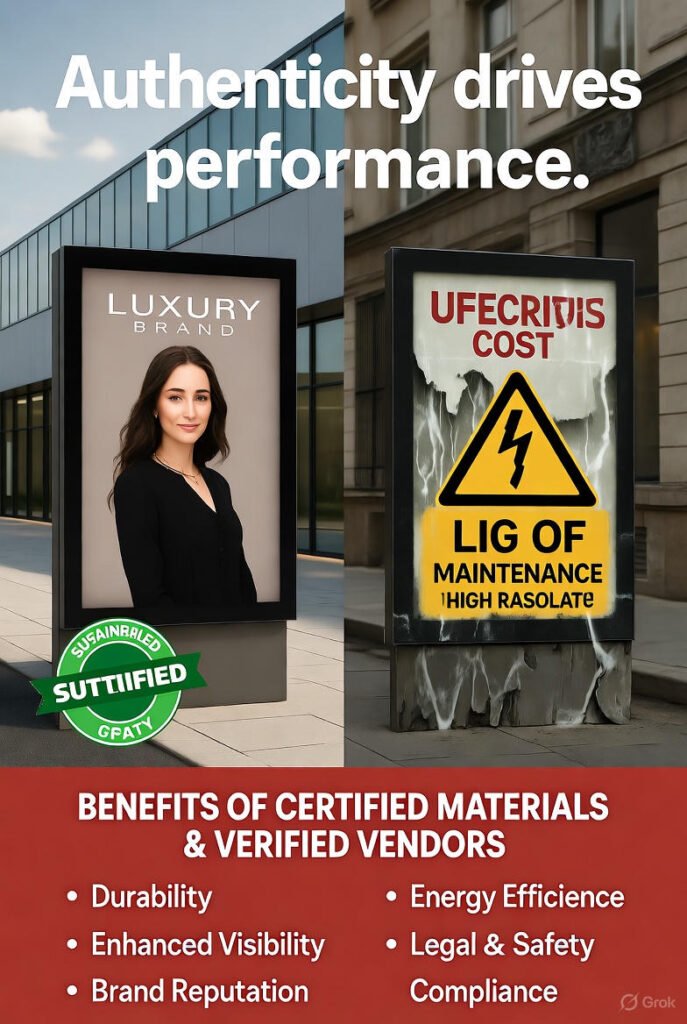
.In short, authenticity drives both brand performance and operational peace of mind.
How Acme Advertising Co. Ensures Quality and Trust
As one of India’s trusted outdoor and retail advertising companies, Acme Advertising Co. sets industry benchmarks for transparency and quality assurance.
Here’s how Acme ensures your brand gets the best:
- Certified Material Procurement – All flex, vinyl, LED, and print materials come from verified manufacturers only.
- Vendor Vetting – Every supplier undergoes background checks and quality audits before onboarding.
- Proof-Based Execution – Each installation includes photographic and GPS-tagged documentation.
- On-Ground Inspections – Dedicated quality teams verify the installation before campaign go-live.
- After-Campaign Reporting – Clients receive post-campaign material condition reports for full accountability.
With these processes, Acme Advertising Co. guarantees that every square foot of your brand’s presence is genuine, durable, and visually flawless.
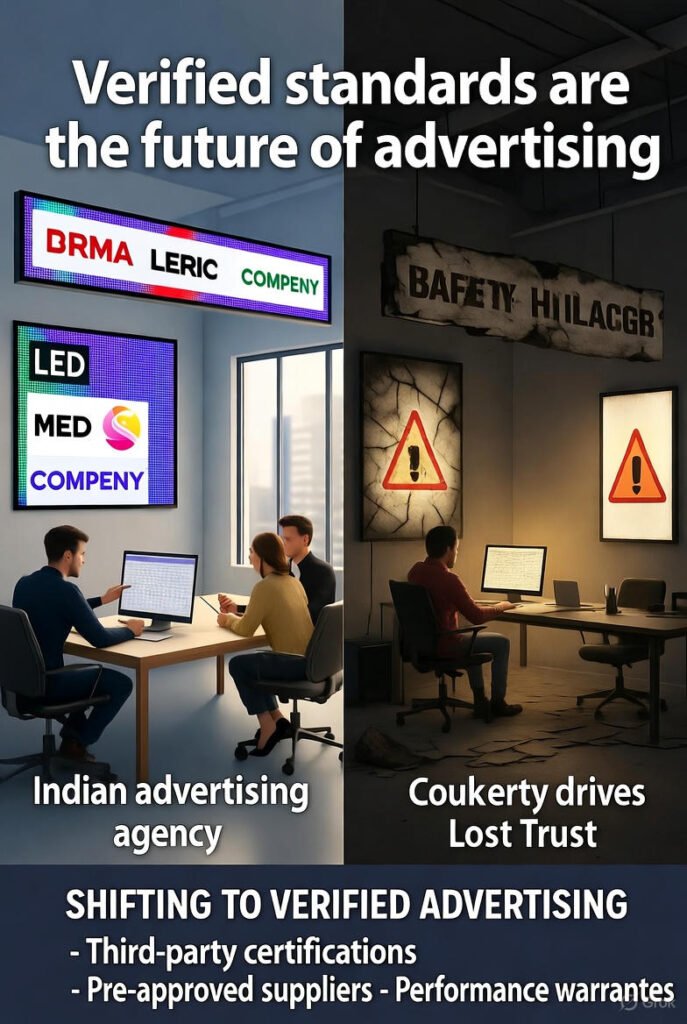
Industry Insights: Shifting Toward Verified Advertising Standards
The Indian advertising landscape is evolving — and the industry is taking notice of the counterfeit crisis.
Major brands are now demanding:
- Third-party material certifications before campaign execution
- Pre-approved supplier lists for signage and LED vendors
- Performance warranties on all installed assets
This shift is creating a culture where proof and quality are inseparable from creativity.
The future belongs to agencies that combine innovation with integrity — just like Acme Advertising Co.
The Future: Transparency and Sustainability in Advertising Production
Beyond counterfeit concerns, brands are also moving toward sustainable and traceable advertising materials.
Emerging trends include:
- Eco-friendly flex alternatives made from biodegradable polymers
- Energy-efficient LED panels with lower carbon footprints
- Digital proofing systems that log each material’s source and authenticity
- Blockchain-based material verification for global campaign tracking
The next era of advertising will not just be about visibility — it will be about accountability and environmental responsibility.
Building a Future Where Every Billboard Reflects Integrity
In advertising, materials speak louder than words.
A brand may have a great concept and powerful visuals — but if the physical medium is fake or weak, the entire impact collapses.
Counterfeit materials are not just a cost problem; they’re a trust problem.
Every time a vendor delivers low-quality boards or LEDs, they damage the integrity of the brand, the agency, and the industry as a whole.
By promoting authentic, certified materials and insisting on proof-based operations, brands can protect their investment and reputation.
At Acme Advertising Co., quality is not an option — it’s a standard.
Every campaign we execute is built on authentic materials, transparent billing, and verified execution, ensuring your brand shines bright — literally and figuratively.
Because when your display glows flawlessly under the city lights, it’s not just an ad — it’s a reflection of your brand’s truth.

